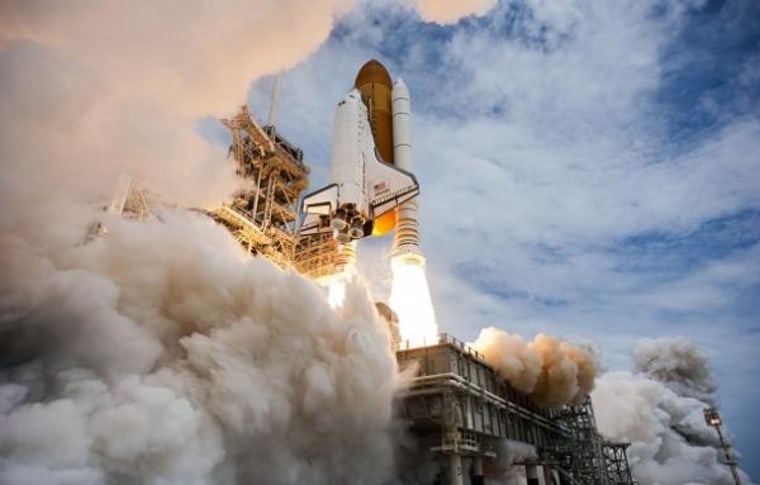Tang. Velcro. Teflon. Each is popularly known as a product of the space age, and yet none of them represent actual NASA tech spinoffs. The real truth behind the innovations that came from human and robotic spaceflight is far murkier.
NASA has recorded about 1,600 new technologies or inventions each year for the past several decades, but far fewer become commercial products, said Daniel Lockney, technology transfer program executive at NASA headquarters in Washington, D.C. It's also tough to predict exactly what technologies may come out of the space program.
"We didn't know that by building the space shuttle main engines we'd also get a new implantable heart device," Lockney said. "There's also a bunch of stuff we don't know we're going to learn, which leads to serendipitous spinoffs."
Gauging the impact of such tech spinoffs on society has similarly proven tricky, especially if people try to figure out the investment return payoff from human spaceflight or broader space exploration.
"The reality is, I think there's an enormous payback that comes from investing in space," Roger Launius, space history curator at the Smithsonian's National Air and Space Museum in Washington, D.C. "But it may be at a level that's less tangible and more macro when we trace a technology."
Of astronauts and robots
Some parts of the space program do create more direct transfers of technology in areas such as medicine. The same technologies that monitor the health of astronauts in orbit can also monitor hospital patients stuck in ICU, and more medical advances may come from spending months in space aboard future missions to the asteroids or Mars.
"We learn more about staving off the effects of aging," Lockney told InnovationNewsDaily. "Space is tough on the body; radiation and microgravity do a number on muscles and bones. We know we're going to learn how to deal with these things."
Robotic missions to other planets or deep space have also yielded lessons for the growing number of robots helping humans out on Earth. NASA is working with companies such as General Motors on some of the latest robot designs.
"We know we will develop robots for deep space missions that, tech from that will be applied to robotic surgery," Lockney said. "We will transfer tech to industrial robots that work in places which are not safe for people to go."
Innovation as people
But some innovations do not appear as a straight line drawn from NASA to commercial products. The U.S. space agency may not claim credit for computers and the digital revolution that followed, but it did create a pool of talent that perhaps contributed to that transformation of modern life.
NASA brought together hundreds of the brightest scientists and engineers in the 1970s to work on the guidance computers that helped the Apollo missions land humans on the moon. When the Apollo era ended, many of those people dispersed to private companies and to Silicon Valley, Launius said.
Yet many maintained the informal contact and social networks that can help spark innovation, regardless of whether they worked at IBM or Stanford University or the Pentagon's DARPA.
"I'd suggest that the knowledge base and connections may have been the most significant outgrowth in this area," Launius said. "They would call each other, informally talk, and together build the base of support and knowledge that leads to a modern world."
Gauging the impact
No defining study has yet come up with the hard numbers about spaceflight's impact on innovation, Launius said. And different economic studies have suggested that investment in the space program has per dollar payoffs ranging from 3:1 all the way up to 21:1.
But signs exist all around us in daily life. For instance, NASA's need for smaller, lighter electronics in space has helped drive the greater trend toward shrinking smartphones and other miniaturized gadgets.
"Miniaturization was an attractive area that NASA pushed very hard to make sure it could have more capability per square inch and pound flown into space," Launius said.
For now, another way to look at the space program's impact on innovation is to consider life without spaceflight, Launius said. People could kiss goodbye to much of today's instantaneous global telecommunications supported by satellites, not to mention those handy GPS devices that sit in people's cars and smartphones.
"Ten years ago I looked it up my destination on a big old map and figured out ways to hold that while driving," Launius said. "Today, I punch in the GPS and away we go."
You can follow InnovationNewsDaily senior writer Jeremy Hsu on Twitter @ScienceHsu. Follow InnovationNewsDaily on Twitter @News_Innovation, or on Facebook.
